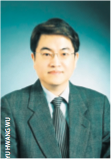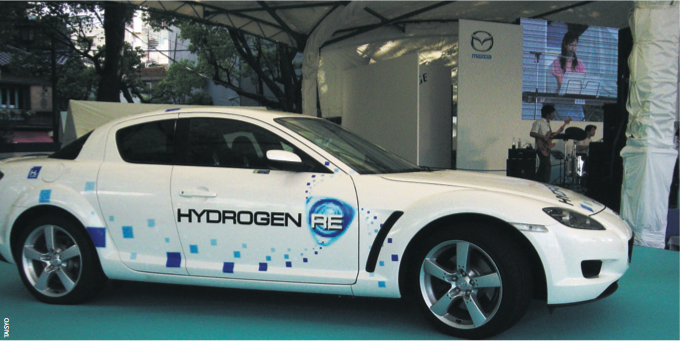MONDAY, 13 OCTOBER 2014
Cloning fraudThe cloning of embryos for the extraction of stem cells has long been a contentious subject, receiving copious media attention. Embryonic stem cells are useful as they can differentiate into any type of cell in the body, making new heart muscle, bone or brain tissue. In 2004, Dr Hwang Woo-suk was hailed as an international pioneer in stem cell research when he published a paper in the journal Science claiming that he had created the world’s first cloned human embryos, extracted stem cells from them and genetically matched them to specific patients. However, scientist bloggers began posting signs of fabricated data, leading the journal Science to retract his papers. In 2006, Dr Hwang was stripped of his license to carry out stem cell research, and he was formally accused of fraud, misusing state funds and violating bioethics laws. Hwang was later convicted of embezzling over $705,000 of funding and of illegally buying human eggs for his research. His former colleagues were also either fined or given suspended prison terms for fraud.
Foot and mouth
Foot and mouth is a highly infectious and sometimes fatal viral disease affecting cloven hoofed animals (for example cattle, sheep, pigs, goats and deer). Symptoms include fever followed by blisters in the mouth and on the feet. The lameness caused by the disease usually gets worse until the animal can only hobble, and a loss of condition is noticeable, partly due to fever but also because the mouth is so painful that the animal doesn’t want to eat. The virus is present in great quantity in the fluid from the blisters, but can also be spread by airborne means. The UK suffered major outbreaks in 2001 and 2007, resulting in the mass slaughter of many animals and devastating the farming community. Infection by the virus also renders the animal’s immune system vulnerable to further attack.
Severe acute respiratory syndrome (sars)
Although still relatively rare, the highly contagious nature of the SARS virus resulted in a major outbreak originating in southern China between 2002 and 2003. The contagion rapidly spread onwards to other countries and reached the public spotlight in February 2003, when an American businessman travelling from China became afflicted with pneumonia-like symptoms and later died in a hospital in Vietnam, where the subsequent spread of the epidemic among the hospital staff alarmed health authorities. The epidemic subsequently continued through until 2004. SARS is a serious form of pneumonia, and symptoms of the disease resemble either a cold or influenza but are accompanied by a fever temperature of over 38°C. SARS has no cure, and a vaccine approved for human use remains a global priority.
Blood clot risk of the contraceptive pill
Over a million women take the combined oral contraceptive pill each day. However, in 2014 the Daily Mail online reported on the ‘Deadly risk of pill used by 1m women: Every GP in Britain told to warn about threat from popular contraceptive’. In reality, although the combined pill contains a synthetic form of the hormone oestrogen that is associated with the risk of blood clots, the true risk of suffering from a blood clot as a direct consequence of taking the combined pill is only around 12 women per 10,000.
MMR vaccine controversy
The controversy surrounding the combined measles, mumps and rubella (MMR) vaccine originates from a 1998 publication in the medical journal ‘The Lancet’ that supported the now discredited theory that colitis and autism disorders could be caused by the jab. The media was heavily criticized for its naïve reporting and for lending undue credibility to the fraudulent research. It was later revealed that the leader of the research, Andrew Wakefield, had undeclared conflicts of interest and had manipulated evidence. Most of Wakefield’s co- authors then withdrew their support for the study. The Lancet paper was partially retracted in 2004 and fully retracted in 2010 when The British General Medical Council (GMC) conducted an inquiry into allegations of Wakefield’s misconduct. In the years that followed, other researchers failed to reproduce Wakefield’s findings or confirm his hypothesis of a relationship between childhood gastrointestinal disorders and autism.
Confirmation of water on mars
Over the years, imaging of Mars’ topography has suggested that liquid water played a role in the planet’s history, yet confirmation of its current existence on
the Martian planet has remained elusive. However, in 2004, the Mars Express satellite confirmed that the Martian polar caps contained liquid water, and in 2005, the European Space Agency announced the existence of a crater containing frozen water. On July 2008, NASA’s Phoenix Lander confirmed the first ever direct observation of ice from the surface. Two years later, the Mars Reconnaissance Orbiter determined that the total volume of water ice in the cap is equal to 30 per cent of the Earth’s Greenland ice sheet-enough to cover the surface of Mars to a depth of 5.6 meters. These discoveries have heightened interest in the search for life on Mars, both past and present, and in 2014 NASA reported that the Curiosity and Opportunity rovers have now made the search for evidence of habitability and organic carbon on Mars a primary objective.
Hydrogen-fuelled cars
Our search for clean renewable energy sources has led to the research and development of new power sources for our currently fossil fuel-hungry vehicles. Hydrogen-powered cars run on a fuel cell, which converts hydrogen to electricity, giving off only heat and water as by-products and, according to the United States Department of Energy, could ‘reduce greenhouse gas emissions by 60 per cent’. However, hydrogen is not a fuel source that occurs naturally on Earth, and the fuel cells are expensive to produce. In 2009, Fortune magazine estimated the cost of producing the Honda Clarity at $300,000 per car. There are still lots of challenges to face regarding the use of hydrogen in vehicles, include production, storage, transport and distribution. Several hydrogen cars now exist, but most of them are concept cars, including the Chevrolet Equinox, the BMW 745h and the Honda FCX.
First trial of human embryonic stem cells
In 2009, approval was given for transplantation of oligodendrocytes (a cell type of the brain and spinal cord) derived from human stem cells into spinal cord- injured individuals, marking the first human stem cell trial. The research behind this scientific advancement was conducted by Hans Keirstead and was supported by the Geron Corporation. Keirstead had previously shown an improvement in motion in spinal cord- injured rats following the transplantation of human endothelial cell-derived oligodendrocytes. The trial was approved in 2009 but, due to concerns regarding the formation of microscopic cysts, was postponed until 2010. Geron left the field of stem cell research following poor results of the trial, but in 2013 BioTime acquired all of Geron’s stem cell assets, stating their intent to restart Geron’s embryonic stem cell-based clinical trial for spinal cord injury in the future.





